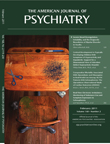If you practice any form of clinical psychiatry, like it or not you are a de facto forensic psychiatrist. Therefore, some type of forensic reference text should be a part of your library, if for no other reason than to satisfy those inevitable episodes when forensic issues encroach on your clinical practice. In that vein, you could do worse than The American Psychiatric Publishing Textbook of Forensic Psychiatry.
The APA imprimatur generally means that a learned, if not seminal, text is in hand. And this is the case here. The author list reads as a who's who of American forensic psychiatry, and thus the bona fides of the text are impeccable. It is encyclopedic in its scope and breadth, as reflected in its length of more than 700 pages.
The difference between forensic psychiatry and other psychiatric subspecialties lies in the unique interface it has with the law. This important and lengthy history is thoroughly reviewed in the first chapter, “Rediscovering Forensic Psychiatry,” by coeditor Liza Gold. Spanning a mere 40 pages, the chapter nonetheless thoroughly reviews both the seminal events and leading lights of historical forensic psychiatry. For those of us choosing to practice at the interface between law and psychiatry, this review is indispensable, covering as it does the historic, ethical, legal, and philosophic underpinnings of the discipline. This chapter alone is worth the price of the book.
The text is logically divided into subsections covering the gamut of forensic issues. In particular, section II, which covers civil liability and the assessment of competency, should be required reading for any psychiatrist, given the ubiquitousness of these issues in a clinical setting. Likewise, part IV contains discussions germane to the assessment of the violent patient as well as key references any psychiatrist who treats these very difficult patients should know.
If I have a quibble with the text, it lies in the inclusion of a “how-to” chapter on starting a forensic practice. Although I understand that an increasing number of clinicians are pursuing this as a practice opportunity, the addition of this section in what is a scholarly work seems odd. The question might be raised, Would Harrison's Principles of Internal Medicine contain such a chapter? The presence of this how-to guide, while informative, seems out of place in what presents itself as a major academic text and might be better suited as a separate publication. However, I understand that the purpose of the addition was to guide clinicians through the ethical and legal pitfalls of starting such a practice.
In general, the text will be a timely addition to any clinical psychiatrist's reference library, and not withstanding the word “ forensic” in the title, it is every bit as relevant to the clinician as the forensic expert.

